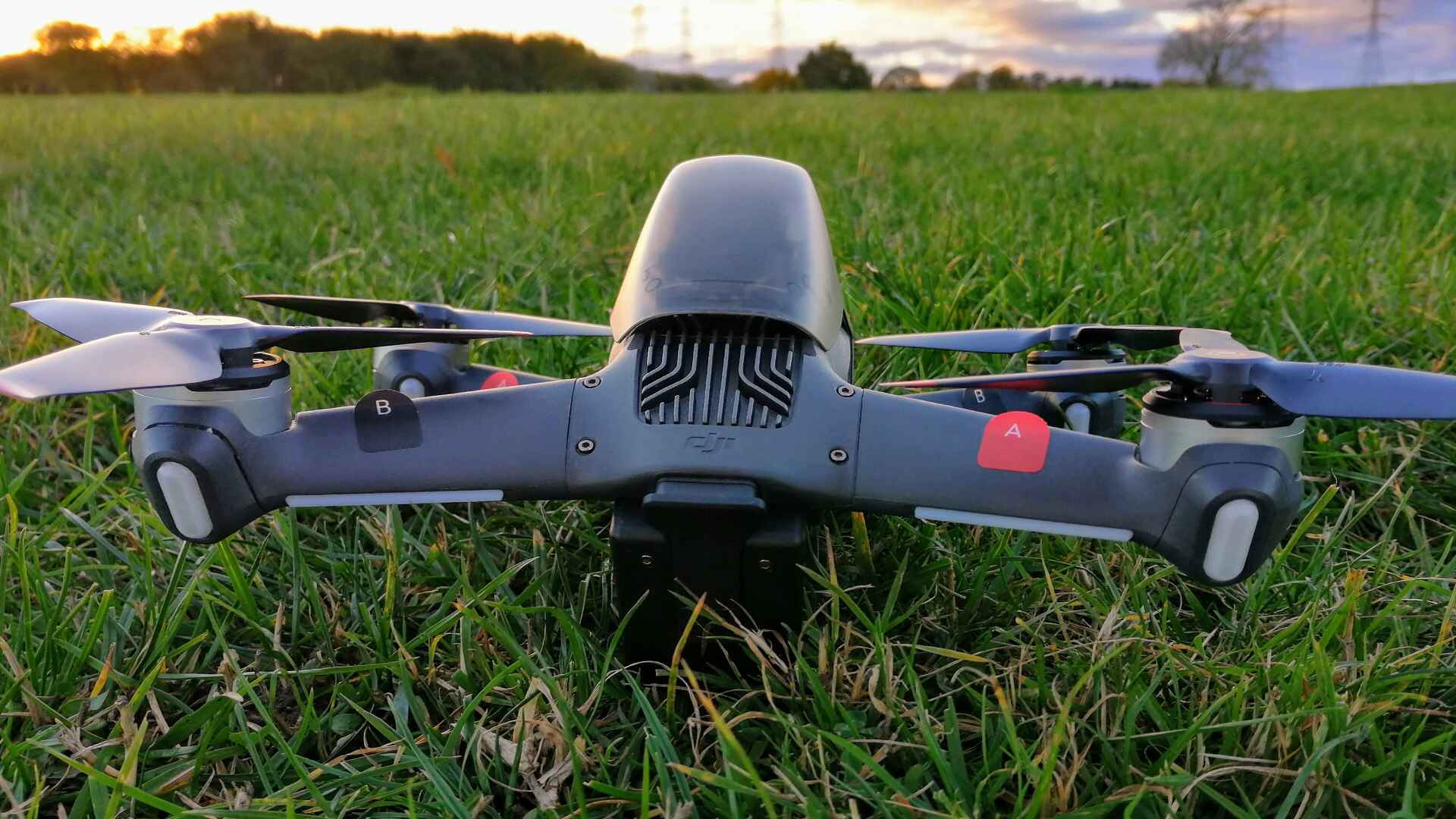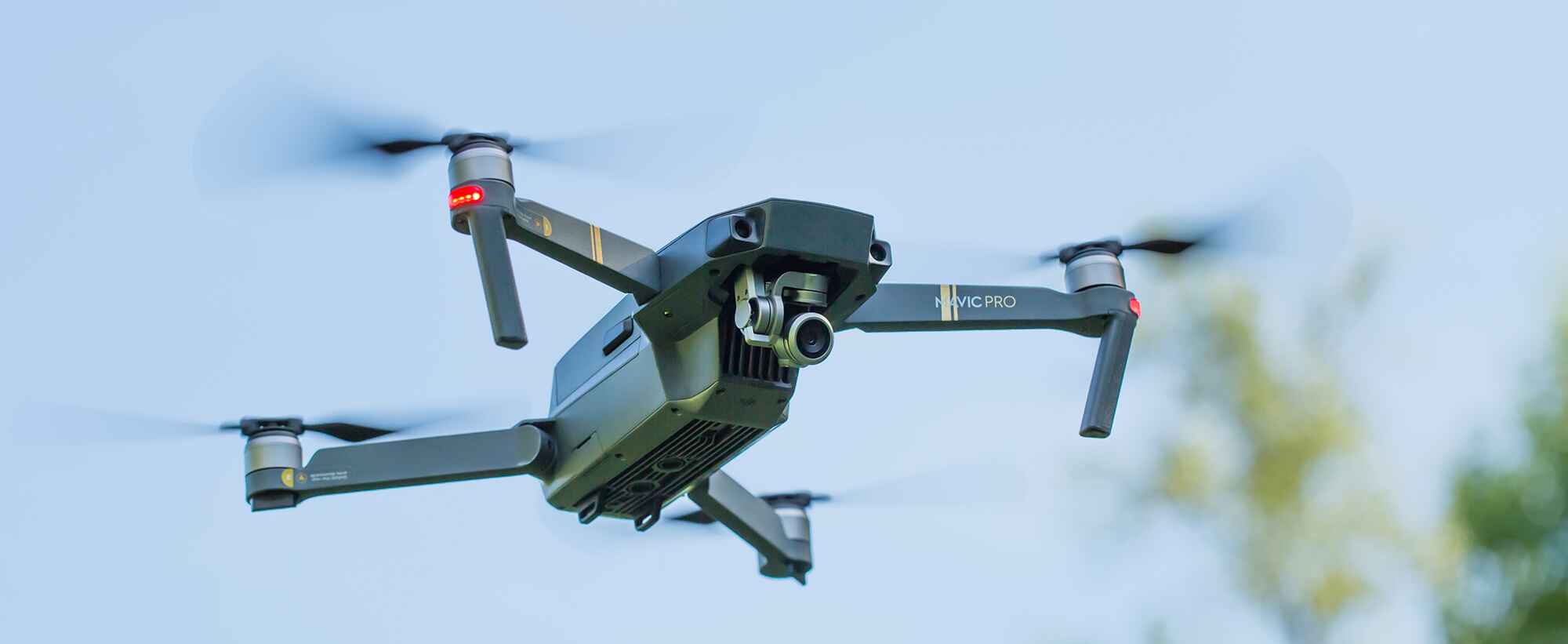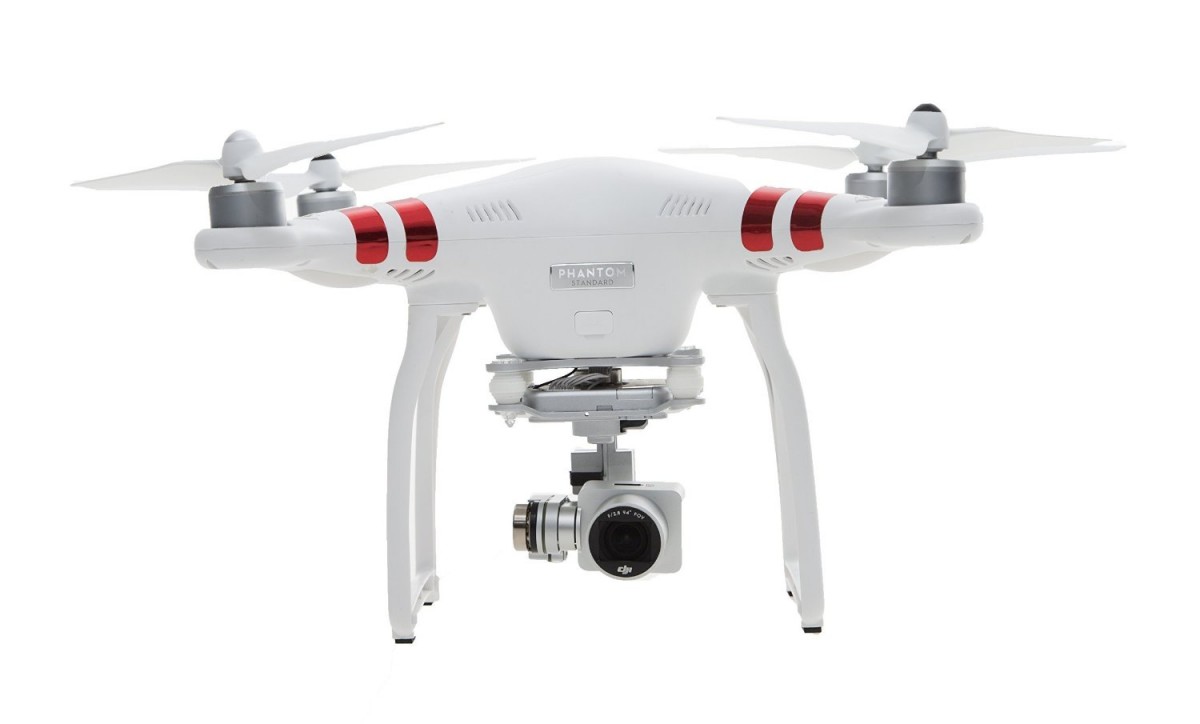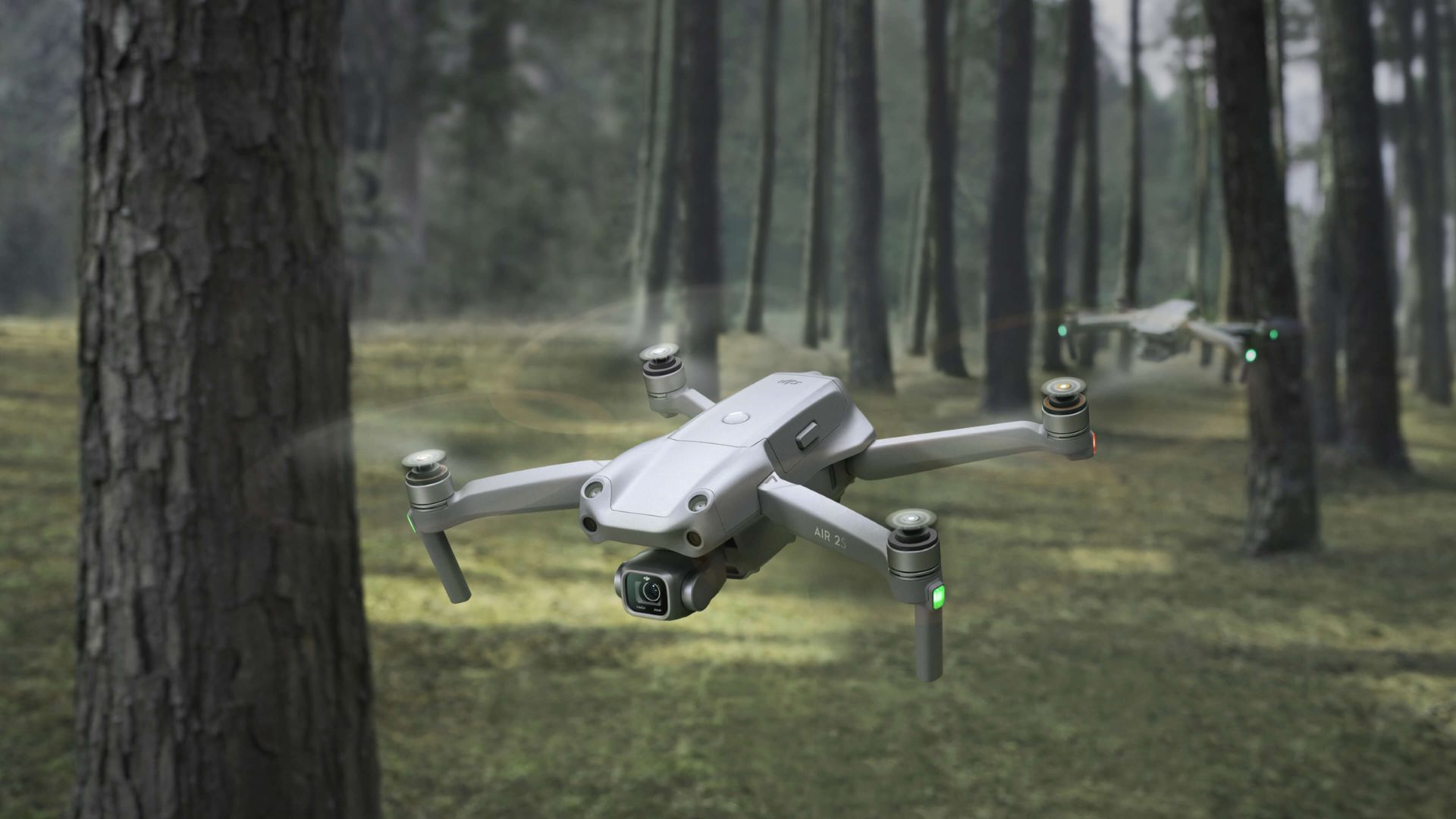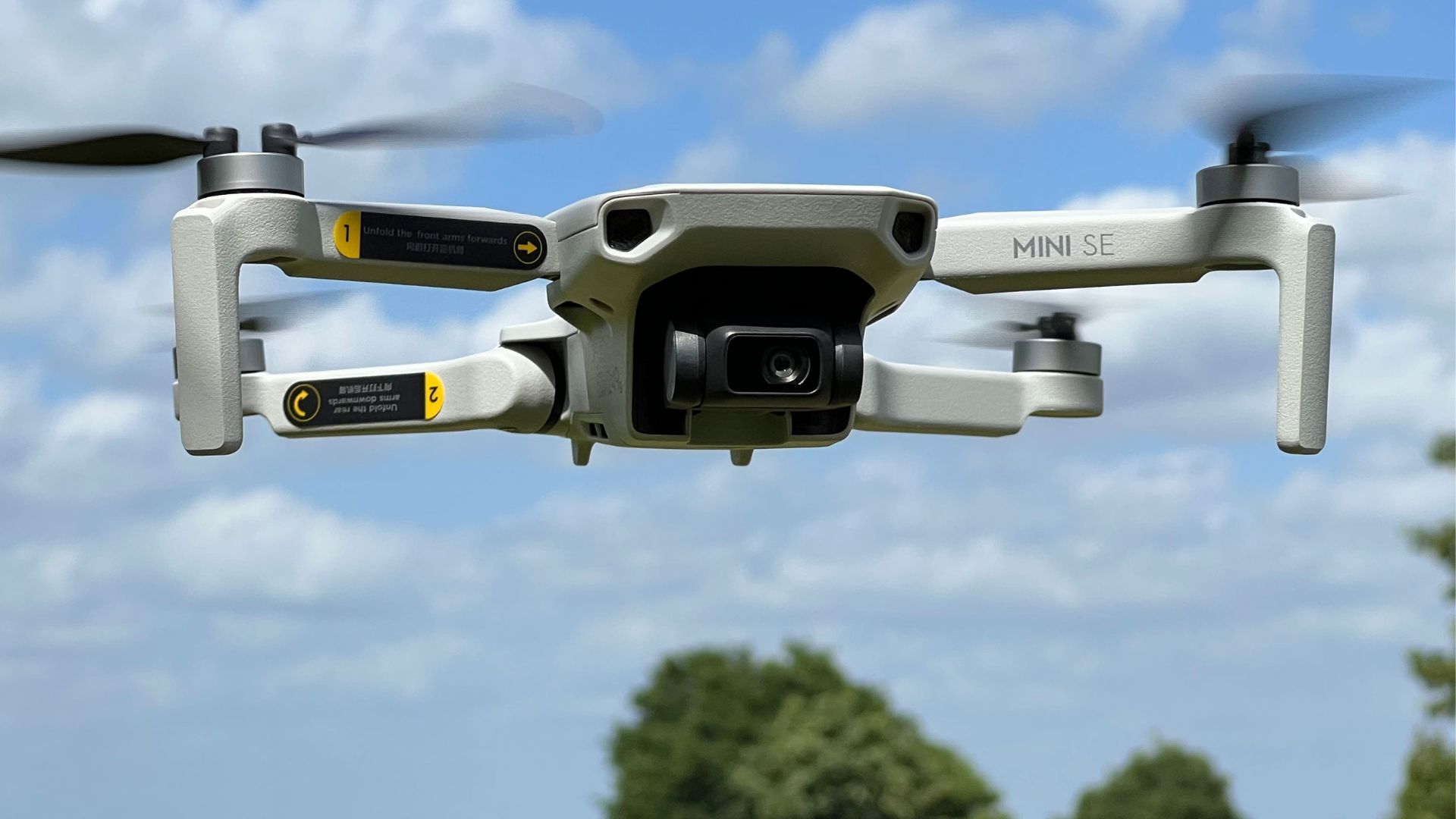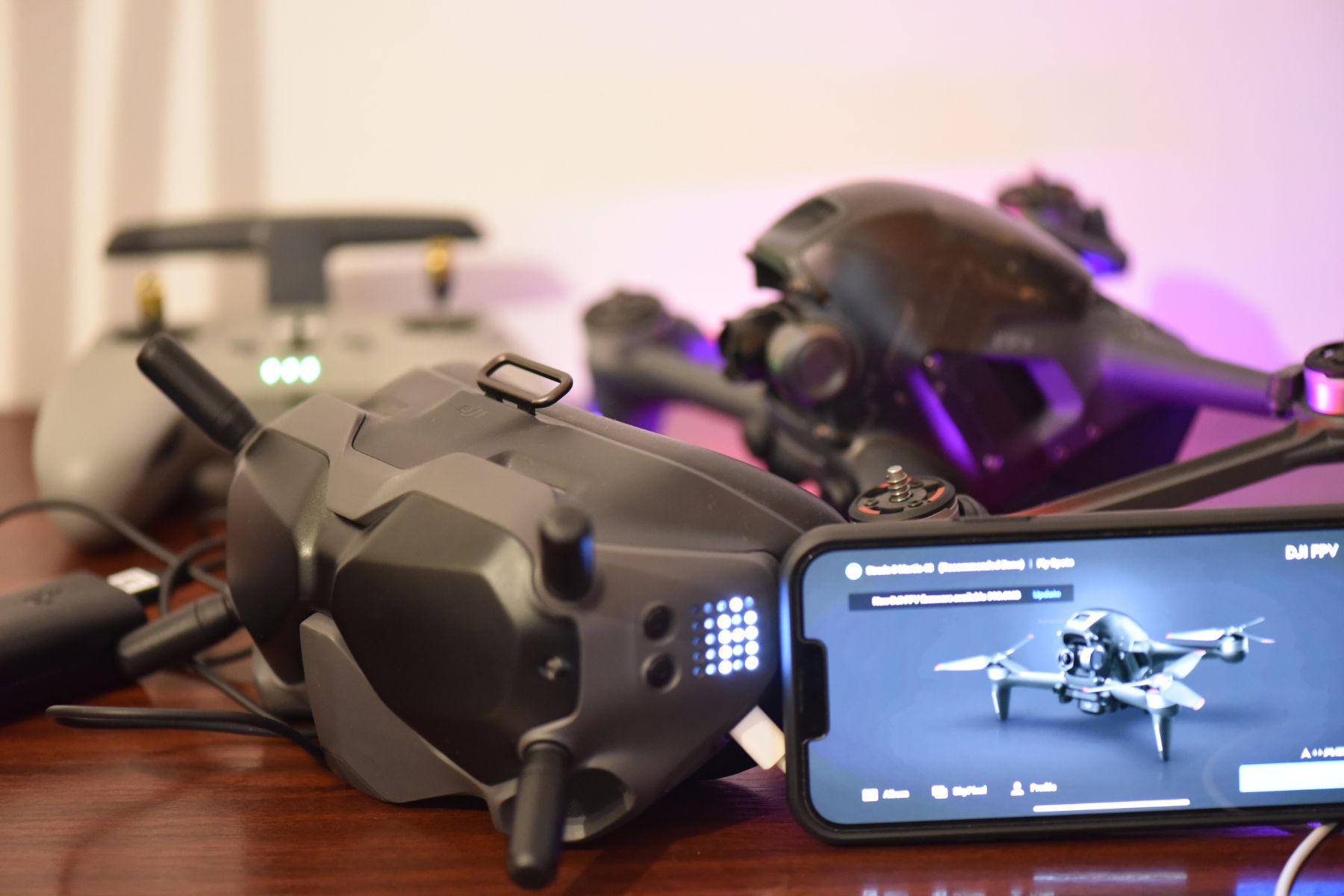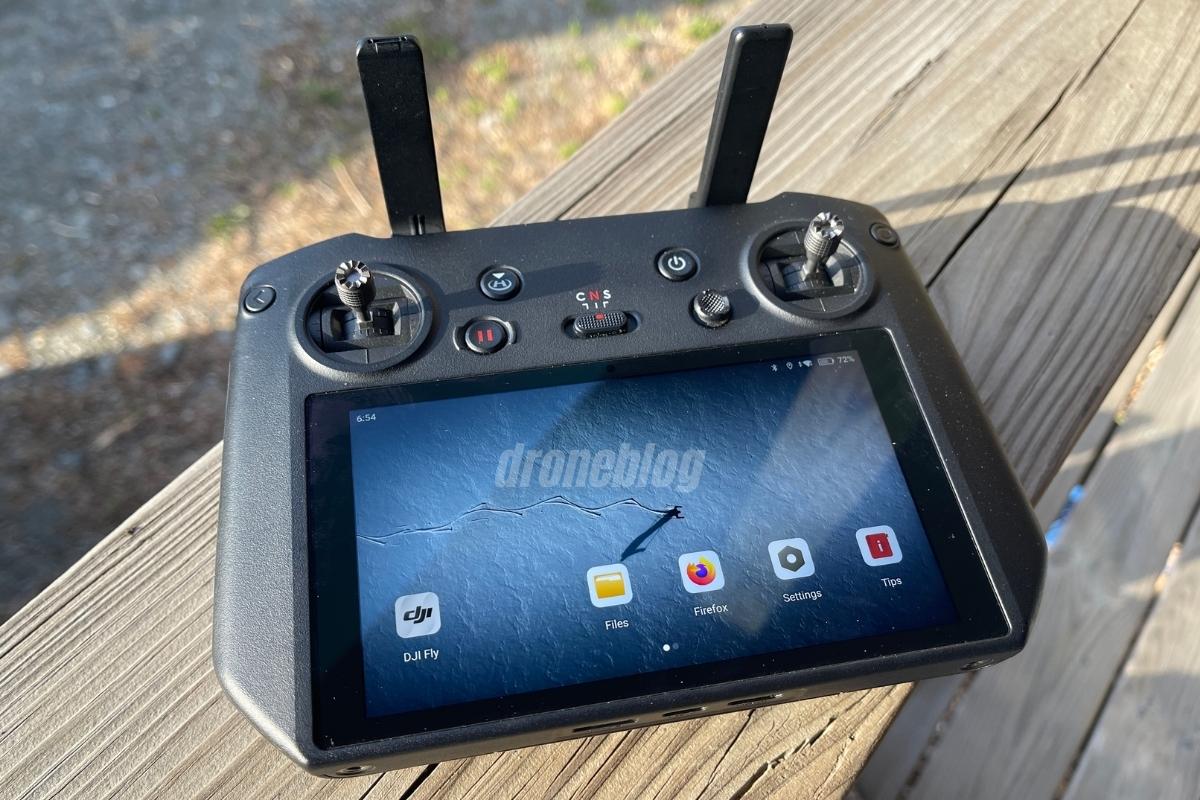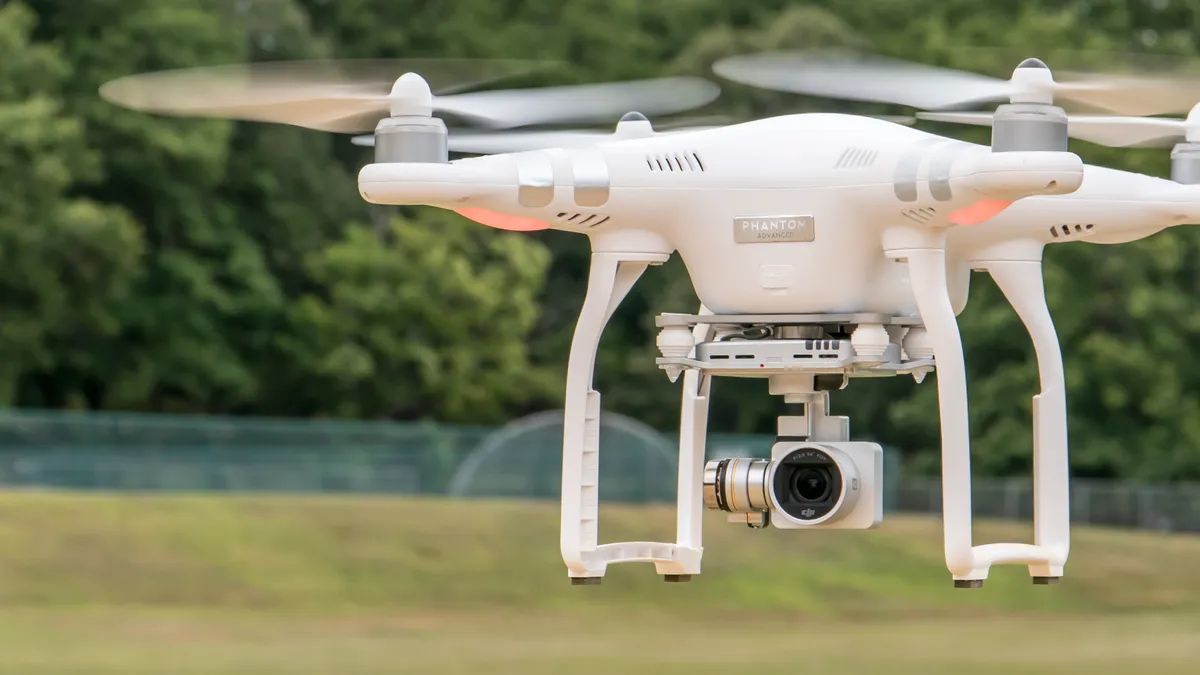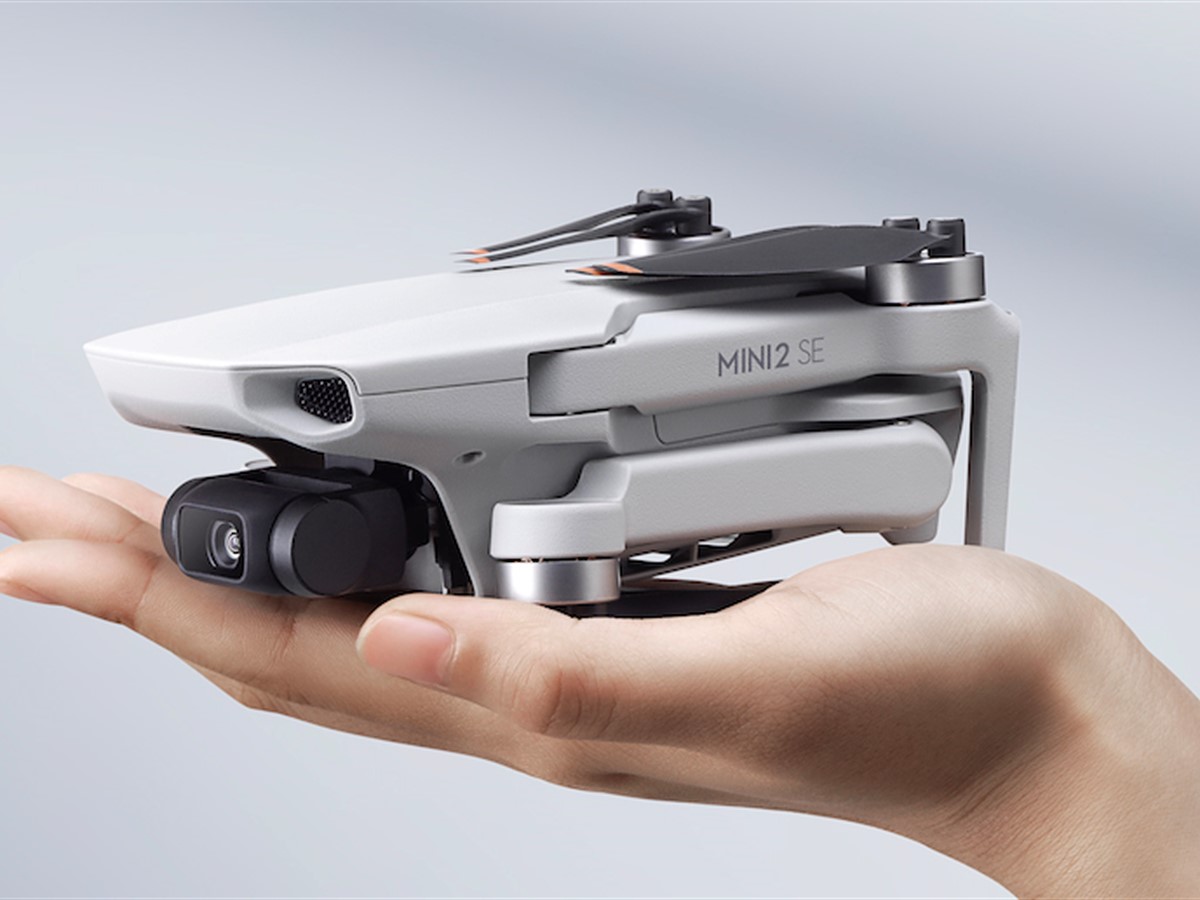Introduction
Welcome to the exciting world of DJI FPV flying! If you’re new to the hobby or considering getting into it, you might be wondering just how far you can take your DJI FPV drone. This article will delve into the flight range and limitations of DJI FPV, as well as the factors that can affect its performance.
DJI FPV (First Person View) is a cutting-edge technology that allows pilots to experience flying from the cockpit perspective. It combines high-definition live video transmission, immersive goggles, and agile maneuverability to provide an exhilarating and immersive flight experience. Whether you’re a recreational flyer, an aerial photographer, or a racing enthusiast, DJI FPV offers a thrilling way to explore the skies.
Understanding the capabilities and limitations of your DJI FPV drone is crucial for a safe and enjoyable flight. While the drone’s range is an important factor, it’s not the only consideration. Factors such as line-of-sight regulations, signal strength, environmental conditions, battery life, and your own experience and skill level will also play a role in determining how far you can fly your DJI FPV drone.
Before we dive into the details, it’s important to note that flying any drone, including DJI FPV, comes with responsibilities. Familiarize yourself with local regulations and follow safety guidelines to ensure a positive experience while respecting the privacy and safety of others.
Understanding DJI FPV
DJI FPV (First Person View) is a revolutionary system that combines FPV goggles, a high-definition camera, and a high-performance drone to deliver an immersive and thrilling flying experience. Unlike traditional drones that are controlled from a distance and viewed through a smartphone or remote controller, DJI FPV allows pilots to feel as if they are inside the drone, seeing what it sees in real-time.
The DJI FPV system consists of three main components: the FPV drone, the FPV goggles, and the FPV remote controller. The drone itself is a lightweight and agile quadcopter equipped with a high-resolution camera that captures smooth and vibrant video footage. The FPV goggles provide a first-person view from the drone’s perspective, allowing pilots to see everything in real-time as if they were sitting in the cockpit. The remote controller is used to send commands to the drone and control its flight.
One of the key features of DJI FPV is its high-definition video transmission system. The goggles receive a live video feed from the drone, providing a crystal-clear view of the drone’s surroundings. This real-time video transmission is essential for a seamless and immersive FPV flight experience. The DJI FPV system also incorporates advanced technology such as low-latency transmission and digital image stabilization, ensuring smooth and responsive video feedback.
In addition to its immersive flight capabilities, DJI FPV offers various flight modes and features to cater to different pilot preferences and skill levels. Whether you’re a beginner looking for stability and assistance in controlling the drone, or an experienced pilot seeking more freedom and agility, DJI FPV provides a range of options to customize your flying experience.
Flight Range and Limitations
When it comes to the flight range of DJI FPV, there are several factors that can affect how far you can fly the drone. The flight range is primarily determined by the signal strength between the drone and the remote controller, as well as the maximum transmission range of the DJI FPV system.
The DJI FPV system uses a digital transmission technology that offers a reliable and stable connection between the drone and the remote controller. However, the signal strength can be affected by various factors, including obstacles, interference, and environmental conditions. It’s important to maintain line-of-sight with the drone to ensure a strong and uninterrupted signal.
The DJI FPV drone has a maximum transmission range of up to 10 kilometers (about 6 miles) in ideal conditions. However, it’s important to note that regulatory guidelines may limit the distance you can fly. Always check local regulations and follow line-of-sight restrictions to ensure a safe and compliant flight.
It’s worth mentioning that the flight range can also be affected by other factors, such as battery life and the drone’s flight time. DJI FPV drones typically have a flight time of around 20-25 minutes, depending on the flight mode and conditions. To maximize your flight range, it’s important to consider battery life and plan your flights accordingly.
Another limitation to consider is the control range of the remote controller. The DJI FPV remote controller has a maximum control range of up to 10 kilometers (about 6 miles) in optimal conditions. However, it’s important to maintain a strong signal between the remote controller and the drone to ensure responsive and reliable control.
While DJI FPV offers an impressive flight range, it’s crucial to fly responsibly and within legal limits. Always adhere to local regulations and guidelines, maintain line-of-sight with the drone, and consider the impact of environmental conditions on the signal strength and flight range. By understanding the limitations and taking appropriate precautions, you can enjoy the exhilarating flight experience that DJI FPV offers!
Line-of-Sight Regulations
When flying any type of drone, including DJI FPV, it’s important to adhere to line-of-sight regulations. Line-of-sight refers to the requirement that the drone must always remain within the visual range of the pilot, meaning you should be able to see the drone with your naked eye at all times during the flight.
Line-of-sight regulations are in place to ensure safe and responsible drone flying. By maintaining line-of-sight, you can better monitor your drone’s position, avoid obstacles, and react to any potential hazards in the surrounding area. It also helps to prevent flyaways and reduces the risk of collisions with other aircraft or objects.
The specific line-of-sight regulations can vary depending on your country and local aviation authority. In some areas, there may be specific guidelines on how far you can fly from your location, how high you can fly, and whether you need any additional permits or licenses for certain flight activities.
It’s important to familiarize yourself with the regulations in your area before flying your DJI FPV drone. Check the local aviation authority’s website or contact them directly to obtain accurate and up-to-date information regarding line-of-sight requirements and any other relevant regulations.
While line-of-sight regulations may seem restrictive, they are in place to ensure the safety of both the pilot and the general public. It’s essential to fly within the designated boundaries to prevent any accidents or hazards that could arise from flying beyond your visual range.
Remember, maintaining line-of-sight doesn’t mean you have to keep your eyes fixated solely on the drone. It’s still possible to use the FPV goggles to get a first-person view of the flight while periodically checking the drone’s position in the sky.
By adhering to line-of-sight regulations, you can enjoy your DJI FPV flights with peace of mind, knowing that you are flying safely and responsibly.
Signal Strength and Interference
Signal strength plays a crucial role in the performance and range of DJI FPV drones. A strong and stable signal is essential for a reliable and smooth flight experience. However, various factors can affect signal strength and potentially introduce interference, which can impact the range and performance of your DJI FPV drone.
One factor that can affect signal strength is physical obstacles. Buildings, trees, and other objects can block the transmission signal and reduce its range. It’s important to maintain line-of-sight with your drone and avoid flying in areas with dense obstructions to ensure an optimal signal connection.
There can also be electromagnetic interference from other sources, such as power lines, radio towers, or strong wireless signals from nearby electronic devices. These sources of interference can disrupt the signal between your drone and the remote controller, affecting the range and stability of the flight. It’s advisable to fly in areas with minimal electromagnetic interference to ensure a strong and reliable signal.
Environmental conditions can also impact signal strength. Weather conditions such as rain, fog, or strong winds can affect the transmission signal and reduce the range. It’s important to take into account the weather conditions before flying and avoid flying in adverse weather conditions that may compromise the signal quality.
Another consideration is the frequency at which your DJI FPV operates. DJI FPV drones typically operate on the 2.4 GHz and 5.8 GHz frequency bands. These frequency bands offer good performance and range, but they can also be crowded with other devices using the same frequencies, such as Wi-Fi networks and other drones. To avoid signal interference, it’s advisable to choose a less congested frequency or adjust the channel settings on your DJI FPV system.
To maintain a strong signal and minimize interference, it’s important to position the antennas correctly. The DJI FPV drone and remote controller have antennas that should be positioned perpendicular to each other for optimal signal reception. Ensuring that the antennas are correctly oriented can contribute to better signal strength and range.
Overall, understanding the factors that can affect signal strength and taking appropriate precautions can help optimize the performance and range of your DJI FPV drone. By minimizing obstacles, avoiding interference sources, considering environmental conditions, and correctly positioning the antennas, you can enjoy a reliable and uninterrupted flight experience.
Environmental Factors
When flying your DJI FPV drone, it’s important to consider the environmental factors that can affect its performance, range, and overall flight experience. Various elements of the environment can impact the drone’s flight characteristics, signal strength, and battery life.
One of the key environmental factors to consider is the wind. Strong winds can affect the stability and maneuverability of the drone, making it more challenging to control and potentially reducing the flight range. It’s recommended to check the weather conditions before flying and avoid flying in high winds that could compromise the safety and performance of the drone.
The temperature and humidity levels can also impact the flight performance of your DJI FPV drone. Extreme temperatures, whether hot or cold, can affect the battery life and overall efficiency of the drone. It’s important to operate within the recommended temperature range specified by the manufacturer to ensure optimal performance and minimize the risk of battery failure.
Another environmental factor to consider is the presence of water or moisture. DJI FPV drones are not waterproof, and flying in wet or rainy conditions can damage the electronic components and compromise the drone’s functionality. It’s advisable to avoid flying in rainy or snowy weather to protect your drone and ensure safe operations.
Furthermore, the altitude at which you fly your DJI FPV drone can impact its performance. Higher altitudes can affect the flight dynamics and control responsiveness due to differences in air density. It’s essential to be aware of any altitude-related limitations specified by the manufacturer and adapt your flight plans accordingly.
Lastly, the presence of electromagnetic interference in the environment can affect the signal strength of your DJI FPV system. As mentioned earlier, sources such as power lines, radio towers, and strong wireless signals can introduce interference, potentially impacting the range and stability of your flight. Choosing open areas with minimal electromagnetic interference is recommended for optimal signal performance.
By considering these environmental factors and making informed decisions about when and where to fly your DJI FPV drone, you can maximize its performance, ensure safety, and prolong its lifespan. Always prioritize safety and abide by local regulations when it comes to environmental limitations that may affect your flight.
Battery Life and Capacity
The battery life and capacity of your DJI FPV drone play a crucial role in determining how long you can fly and the overall flight experience. Understanding the battery specifications, optimizing usage, and planning accordingly are essential for maximizing your flight time and enjoyment.
DJI FPV drones typically come equipped with intelligent flight batteries that provide a flight time of around 20-25 minutes on average. However, the actual flight time can vary depending on various factors, including flight speed, maneuvers, weather conditions, and payload weight. It’s important to keep these factors in mind when planning your flights.
It’s worth noting that the battery life specified by the manufacturer is typically based on ideal flight conditions and may vary in real-world scenarios. Factors like wind, temperature, altitude, and usage patterns can influence the battery performance and flight time. Extreme weather conditions or flying at high altitudes can drain the battery faster, leading to shorter flight times.
To maximize your flight time, it’s advisable to fully charge your battery prior to each flight and ensure you have spare batteries available for extended flying opportunities. Carry out regular maintenance on your batteries, such as checking for any physical damage or signs of wear, and follow the manufacturer’s guidelines for proper battery care and storage.
In addition to flight time, it’s important to consider the battery capacity of your DJI FPV drone. Upgrading to a higher-capacity battery can extend your flight time, allowing for longer exploration or more time to capture breathtaking aerial footage. However, keep in mind that higher-capacity batteries might also increase the weight of the drone, potentially affecting its agility and flight performance.
During your flight, it’s essential to keep an eye on the remaining battery level to prevent a sudden loss of power mid-flight. DJI FPV drones usually have built-in battery management systems that provide real-time information on battery status. It’s advisable to set low battery warnings and return-to-home settings to ensure a safe landing when the battery reaches a certain level.
To optimize battery usage and extend your flight time, there are a few strategies you can employ. One is to fly in a efficient and smooth manner, avoiding excessive maneuvers or high-speed flight, which can drain the battery faster. Additionally, consider the payload weight and remove any unnecessary accessories or equipment that add unnecessary strain on the battery.
By understanding the battery specifications, adopting good battery management practices, and planning your flights accordingly, you can make the most out of your DJI FPV drone’s battery life and capacity. This will allow you to enjoy longer flights and capture stunning aerial moments without any unexpected interruptions.
FPV Experience and Skill Level
When it comes to flying DJI FPV drones, your experience and skill level play a significant role in determining how far and how well you can fly. FPV flying is known for its immersive and dynamic nature, but it also requires a certain level of proficiency and understanding of flight dynamics.
If you’re new to FPV flying, it’s important to start with the basics and gradually progress as you gain more experience. DJI FPV drones offer different flight modes, ranging from beginner-friendly modes with assistance and stability features to more advanced modes that provide more freedom and agility. Choosing the right flight mode based on your skill level is crucial to ensure a safe and enjoyable flight.
As a beginner, it’s recommended to practice in open areas with minimal obstacles and distractions. This will help you focus on mastering basic maneuvers, such as ascending, descending, hovering, and simple turns. Gradually, you can progress to more advanced flying techniques, including flips, rolls, and precise control in tight spaces.
Building your FPV skills requires practice and perseverance. It’s essential to take the time to familiarize yourself with the controls, understand the flight characteristics of your DJI FPV drone, and continuously hone your piloting skills. Consider joining local FPV flying communities or online forums where you can learn from experienced pilots, exchange tips, and share your flying experiences.
It’s important to note that flying beyond your skill level can lead to accidents or crashes, potentially damaging your drone and endangering people and property. Always push your limits gradually and have a clear understanding of your skill level and capabilities.
As your FPV skills improve, you can begin to explore longer flight distances and more challenging flying scenarios. However, remember to always fly within legal boundaries, adhere to local regulations, and prioritize safety. Brushing up on local laws and regulations regarding drone flying will help you navigate through any legal considerations and ensure a responsible and compliant flight.
By continuously pushing yourself to improve your FPV skills, understanding the capabilities of your DJI FPV drone, and practicing safe and responsible flying, you’ll be able to fully enjoy the exhilarating experience that FPV flying offers. Remember, Rome wasn’t built in a day, and mastering FPV piloting takes time and dedication.
Legal Considerations for Flight Distance
When it comes to flying your DJI FPV drone, it’s crucial to understand and comply with the legal considerations regarding flight distance. Different countries and regions may have specific regulations and requirements that restrict how far you can fly your drone.
First and foremost, it’s important to familiarize yourself with the rules and regulations set by your local aviation authority. These regulations typically outline the maximum flight distance, altitude limits, and other restrictions for drone operation in your area. Make sure to research and understand these guidelines before taking your DJI FPV drone for a flight.
In many countries, drones are required to be flown within the visual line-of-sight of the pilot. This means that you must be able to see your drone with your naked eye at all times during the flight. There may also be specific distance limitations from your location, beyond which you are not allowed to fly. Understanding these line-of-sight regulations is essential for ensuring a safe and compliant flight.
Additionally, certain areas may be designated as no-fly zones or restricted airspace due to their proximity to airports, military installations, or other sensitive locations. It’s important to consult local maps and drone-specific apps or websites to identify these restricted areas and avoid flying there.
In some cases, you may need to obtain additional permits or authorizations to fly your DJI FPV drone beyond certain distances or in specific areas. For example, if you’re planning to fly your drone for commercial purposes, you may need to acquire a remote pilot certificate or a special exemption from the aviation authority in your country.
Compliance with these legal considerations is not only important for ensuring a safe flight but also for preserving the reputation of drone enthusiasts and promoting responsible drone usage. By adhering to the regulations, you contribute to the overall safety of the airspace and help build a positive perception of drone technology.
It’s worth noting that the legal landscape around drone operations can change, so it’s important to stay updated with any new regulations or amendments that may affect your flight distance. Regularly check the official websites or communication channels of your local aviation authority for the latest information.
By understanding and abiding by the legal considerations regarding flight distance, you can enjoy the DJI FPV experience while ensuring a safe, responsible, and compliant flight. Always prioritize safety, respect others’ privacy, and adhere to the regulations in your area to make the most of your FPV adventures.
Conclusion
In conclusion, DJI FPV offers an exhilarating and immersive flying experience that allows you to explore the skies from a first-person perspective. Understanding the flight range and limitations of your DJI FPV drone is crucial for a safe, enjoyable, and compliant flight.
Factors such as signal strength, line-of-sight regulations, environmental conditions, battery life, and your own FPV experience and skill level all play a role in determining how far and how well you can fly your DJI FPV. Familiarize yourself with local regulations, fly within line-of-sight, and consider environmental factors like wind, temperature, and electromagnetic interference.
Optimizing battery usage, considering battery capacity, and practicing responsible drone piloting will help you make the most of your flight time and ensure a safe landing. As you gain FPV experience and improve your skill level, you can gradually explore longer flight distances and more challenging flying scenarios.
Lastly, it’s important to consider the legal considerations for flight distance and abide by local regulations. Understand the rules and restrictions, acquire any necessary permits or authorizations, and fly in a safe and compliant manner, respecting the privacy and safety of others.
With a solid understanding of the flight range and limitations, as well as adherence to legal considerations, you can fully enjoy the thrilling world of DJI FPV flying. Whether you’re capturing stunning aerial footage, competing in races, or simply enjoying the freedom of flight, DJI FPV offers an unparalleled experience that continues to push the boundaries of what’s possible in the world of drones.







